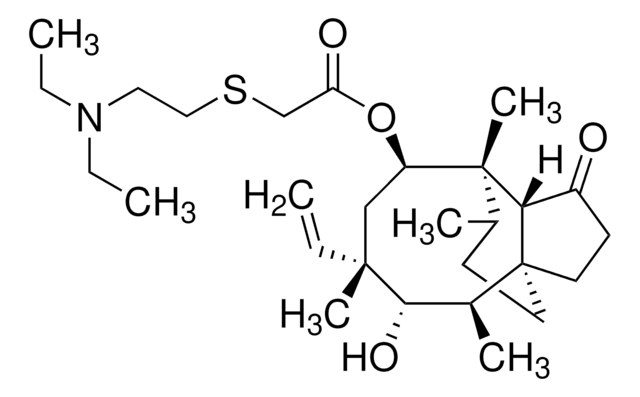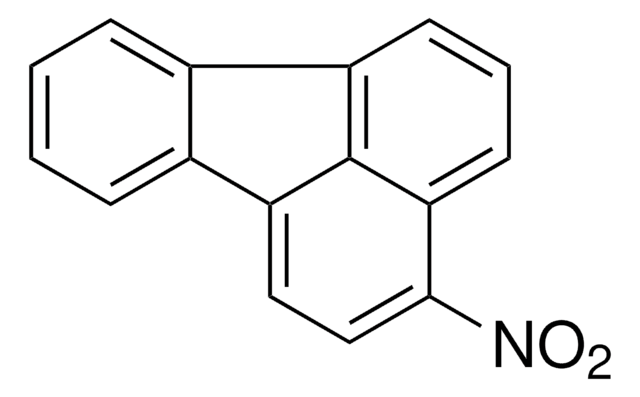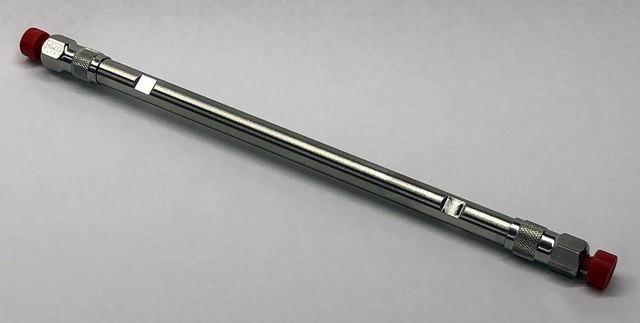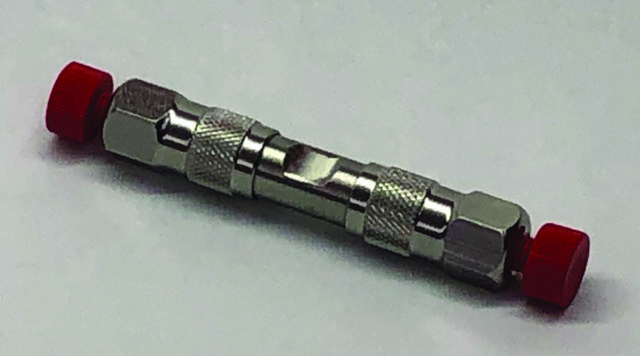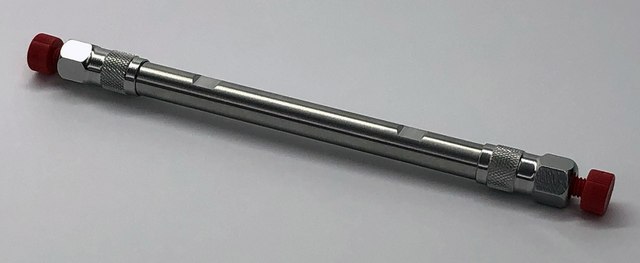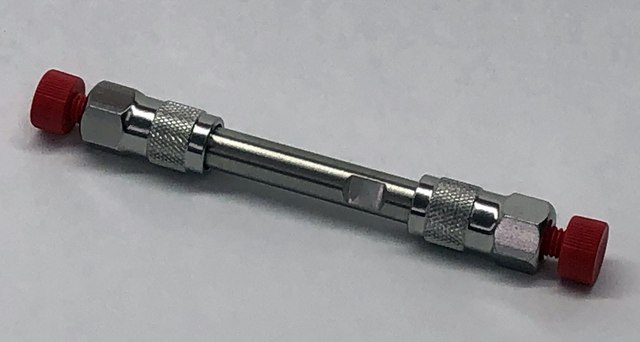53346-U
Ascentis® Express 90 Å Phenyl-Hexyl (2.7 μm) HPLC Columns
L × I.D. 15 cm × 3 mm, HPLC Column
Synonym(s):
Core-shell (SPP) Fused Core Phenyl HPLC column
About This Item
Recommended Products
Product Name
Ascentis® Express Phenyl-Hexyl, 2.7 μm HPLC Column, 2.7 μm particle size, L × I.D. 15 cm × 3 mm
material
stainless steel column
Quality Level
Agency
suitable for USP L11
product line
Ascentis®
feature
endcapped
manufacturer/tradename
Ascentis®
packaging
1 ea of
parameter
60 °C temp. range
600 bar max. pressure (9000 psi)
technique(s)
HPLC: suitable
LC/MS: suitable
UHPLC-MS: suitable
UHPLC: suitable
Looking for similar products? Visit Product Comparison Guide
Related Categories
1 of 4
This Item | 53347-U | 53345-U | 53334-U |
|---|---|---|---|
| matrix active group phenylhexyl phase | matrix active group phenylhexyl phase | matrix active group phenylhexyl phase | matrix active group phenylhexyl phase |
| separation technique reversed phase | separation technique reversed phase | separation technique reversed phase | separation technique reversed phase |
| particle size 2.7 μm | particle size 2.7 μm | particle size 2.7 μm | particle size 2.7 μm |
| L × I.D. 15 cm × 3 mm | L × I.D. 3 cm × 4.6 mm | L × I.D. 10 cm × 3 mm | L × I.D. 5 cm × 2.1 mm |
| agency suitable for USP L11 | agency suitable for USP L11 | agency suitable for USP L11 | agency suitable for USP L11 |
| matrix Fused-Core particle platform, superficially porous particle | matrix Fused-Core particle platform, superficially porous particle | matrix Fused-Core particle platform, superficially porous particle | matrix Fused-Core particle platform, superficially porous particle |
General description
Application
- A fully automated and fast method using direct sample injection combined with fused-core column on-line SPE-HPLC for determination of ochratoxin A and citrinin in lager beers.: This study presents a rapid, automated method for the detection of mycotoxins in beer using high-performance liquid chromatography. The use of the Ascentis® Express Phenyl-Hexyl column enables efficient and effective sample processing, demonstrating its applicability in food safety and quality control (Lhotska et al., 2016).
- Advantages of core-shell particle columns in Sequential Injection Chromatography for determination of phenolic acids.: This paper explores the benefits of using core-shell particle technology, including Ascentis® Express Phenyl-Hexyl columns, in the analysis of phenolic acids. The study highlights the columns′ enhanced performance and efficiency, making them valuable for chemical analysis in environmental and food samples (Chocholous et al., 2013).
Legal Information
guard cartridge
related product
required but not provided
Storage Class Code
11 - Combustible Solids
WGK
WGK 3
Flash Point(F)
Not applicable
Flash Point(C)
Not applicable
Choose from one of the most recent versions:
Certificates of Analysis (COA)
Don't see the Right Version?
If you require a particular version, you can look up a specific certificate by the Lot or Batch number.
Already Own This Product?
Find documentation for the products that you have recently purchased in the Document Library.
Our team of scientists has experience in all areas of research including Life Science, Material Science, Chemical Synthesis, Chromatography, Analytical and many others.
Contact Technical Service![Benzo[a]pyrene ≥96% (HPLC)](/deepweb/assets/sigmaaldrich/product/structures/253/820/be96d879-1811-46c0-8f11-612019691c2d/640/be96d879-1811-46c0-8f11-612019691c2d.png)

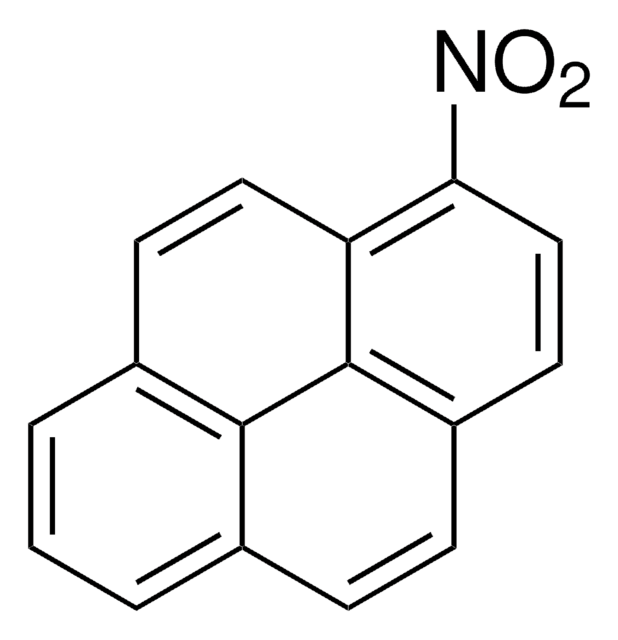
![6-Nitrobenzo[a]pyrene BCR®, certified reference material](/deepweb/assets/sigmaaldrich/product/structures/171/174/0d276831-8604-4a0e-96f0-36fe2fd87f0a/640/0d276831-8604-4a0e-96f0-36fe2fd87f0a.png)
![Indeno[1,2,3-cd]pyrene certified reference material, TraceCERT®, Manufactured by: Sigma-Aldrich Production GmbH, Switzerland](/deepweb/assets/sigmaaldrich/product/structures/231/153/b0b230c2-efa0-4f43-a261-66b931ead3d2/640/b0b230c2-efa0-4f43-a261-66b931ead3d2.png)

![Benz[a]anthracene 99%](/deepweb/assets/sigmaaldrich/product/structures/351/486/b3ddf157-a732-4ef8-83f0-c70a53404cb2/640/b3ddf157-a732-4ef8-83f0-c70a53404cb2.png)
